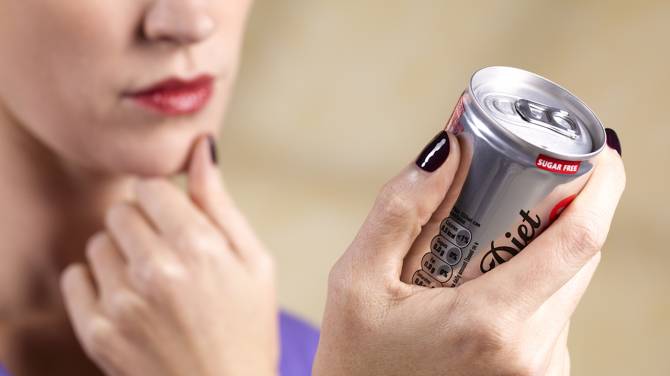
Alas, we have embarked on the holidays. First, Halloween with all its sweet treats and empty calories, before us is Thanksgiving with its rich, calorie-laden delights, and then for the triple whammy, weeks of Christmas celebrations complete with cookies. What can we do to prevent ourselves from gaining unhealthy extra weight?
Improving the quality of our everyday meals will help us weather the storms of holiday eating. Increasing our intake of vegetables and fruits is the best thing we can do for our health during the holidays.
You can gradually develop a taste for healthy food if you start with flavors you like but in a healthier form. If you aren’t used to eating dark green leafy vegetables, start by mixing zero nutrition Iceberg lettuce with iron and vitamin rich baby spinach. Adding some sweet, ripe fruit to your green salad may help you make the switch, too. Make it your goal to never buy Iceberg lettuce but instead substitute spinach in salads and sandwiches. I even sneak spinach into many dishes such as spaghetti sauce, stir-fry, and soups. Add a handful as the last ingredient before serving. It cooks in just a couple of minutes. No one will notice the difference in taste, but the added iron and vitamins are a big bonus. Kale is a powerhouse of nutrition, but it’s harder to hide. I’ve had some luck with freezing fresh kale and then crumbling it into small bits while still frozen and adding a little to cooked dishes. That way it’s harder to detect. Yes, I do resort to stealth for the sake of good nutrition!

Love potatoes? Mashed, fried, boiled? Try using sweet potatoes instead. ” They’re just as versatile and they provide 400% of your RDA for Vitamin A. They have more vitamin C, fewer calories, more fiber and fewer carbs than white potatoes.” https://ClevelandClinic.org/2013/white-potatoes
Eating whole grains provides good carbs that help us feel satisfied and full. If you’re a white bread fan, try bread with a combination of enriched wheat and whole wheat. If you live on the West Coast, Dave’s Killer Bread has several varieties that are delicious and nutritious and are guaranteed to win you over to more healthy bread. A piece of whole wheat toast with natural peanut butter is a great pick-me-up when you need energy because you’re pairing carbs and protein. Protein helps us avoid the blood sugar spike/crash we get from carbs alone. 
Love rice? Try switching to brown rice which is white rice that still has its outer coating. Brown rice has more fiber which means it takes longer to digest and is healthier for your elimination than white rice which has had its coating removed. Avoiding processed food is best, but if you want a quick store-bought snack, at least choose wisely by reading labels. Non-GMO corn is proven to be healthier, so look for tortilla chips with non-GMO on the label. One brand we’ve found at Costco is called Late July Sea Salt Multigrain tortilla chips. It contains whole grain corn, as well as brown rice, flax, millet, and quinoa. It satisfies more than fluffier snacks because of the whole grain, but don’t eat a lot because it is still calorie-laden albeit fewer calories than regular tortilla chips. Remember to eat some protein with your carbs in order to prevent a blood sugar spike followed by blood sugar crash. A little cheese with your whole grain tortilla chips ensures that you won’t feel drained in half an hour. Hummus is both carb and protein rich for more even blood sugar levels. Read snack labels because they are notorious for having sugars, artificial flavors, flavor enhancers, and preservatives. I challenge you to read every food label this week. It will be an eye-opener! And remember that whole grains have more staying power than processed grains.
If you’re addicted to pop, try seltzer water without artificial flavors or sweeteners. You can even add a little frozen juice concentrate to the seltzer water for a treat. Remember that carbonation isn’t good for your bones on a daily basis, so make it your goal to enjoy good water as your daily drink of choice. Some folks find it helpful to infuse lemon, cucumber, or fruit in their water for just a little flavor. Adding powdered flavoring is counterproductive because it contains artificial flavors and sugar substitutes, chemicals your body doesn’t need. Please don’t imagine that sugar-free pop is a good option. Here’s the skinny: (Actually not skinny at all!) Our brains register artificial sweeteners as 600 times sweeter than sugar. In comparison, natural sugars like fruit don’t taste sweet, so we lose our enjoyment and desire for real foods. Shockingly, artificially sweetened drinks, such as diet sodas, were tied to a higher risk of stroke and dementia in the study published in the American Heart Association’s journal Stroke in April.
http://www.cnn.com/2017/04/20/health/diet-sodas-stroke-dementia-study/index.html

“people who routinely use artificial sweeteners may start to find less intensely sweet foods, such as fruit, less appealing and unsweet foods, such as vegetables, downright unpalatable.
Participants in the San Antonio Heart Study who drank more than 21 diet drinks per week were twice as likely to become overweight or obese as people who didn’t drink diet soda.
Animal studies suggest that artificial sweeteners may be addictive. In studies of rats who were exposed to cocaine, then given a choice between intravenous cocaine or oral saccharine, most chose saccharin.”
https://www.health.harvard.edu/blog/artificial-sweeteners-sugar-free-but-at-what-cost-201207165030
If you love chocolate, you can try switching from sugar-laden milk chocolate to semi-sweet chocolate. Even semi-sweet chocolate lists sugar as its first ingredient. Then step up to 60% or higher cacao bittersweet dark chocolate which has more health benefits. Altho dark chocolate candy bars are expensive, you can buy Ghiradelli 60% cacao bittersweet chocolate chips for much less per ounce. Walmart and Sam’s Club has them for the lowest price, followed by WinCo and then Fred Meyer/Kroger. Husband hit upon a genius ploy to enjoy these chips to the maximum while eating smaller quantities. Instead of chewing up a handful and wanting more, he puts one or two in his mouth and lets them dissolve slowly. The slow melt allows him to savor the chips for a long time and satisfies his craving with smaller amounts and fewer calories.
Further Reading
Brain Response to Artificial Sweeteners
Tricking Taste Buds but Not the Brain
“. . .taste-reward system including the midbrain and caudate nucleus. This suggests that the brain’s reward pathway is conditioned to prefer a sugar, or caloric-based, stimulus. . . .researchers found that the more diet soda an individual consumed, the lower their activation was in the caudate nucleus. Thus, people that drank the most diet soda had the least activity in the caudate head region.”
( the Caudate region is the center for reward. Sweeteners can’t activate that center. This may cause us to keep drinking, but not feel satisfied.)
Brown rice vs White rice
“After rice is harvested, the grain is dried, the outer hull removed, and what’s left — the brownish germ and the bran — constitutes brown rice. Further milling and polishing produce white rice. This refinement strips away vitamins, minerals, and fiber, but creates a product with a longer shelf life, and some would argue, a better taste.
Just one cup of brown rice delivers more than 80 percent of your daily requirement of manganese, a mineral critical to brain and nerve function that’s also involved in regulating metabolism and blood sugar. Brown rice also contains twice the phosphorus of its white counterpart and 2.5 times the iron, as well as a natural bran oil that helps reduce LDL cholesterol.
On the vitamin side, brown rice yields three times the B3, four times the B1, and 10 times the B6. Manufacturers sometimes try to bridge the gap by enriching white rice with a thin coating of vitamins before sending the grain to market, but the lost fiber and heart-healthy oil can never be restored — and if you rinse your white rice before cooking it, those vitamins just go down the drain anyway.
In terms of calories and carbohydrate content, the two varieties don’t differ much, but because of its fiber, brown rice offers a lower glycemic index. That means you’ll experience a slower, less dramatic spike in blood sugar after eating those carbs. Researchers in both the U.S. and Asia have linked frequent white rice consumption to an elevated risk of Type 2 diabetes, making the brown variety the better choice for anyone worried about the disease. Health professionals also recommend brown rice for those pursuing weight loss, since the increased fiber helps you feel satisfied with less food.”
http://www.thekitchn.com/is-brown-rice-really-better